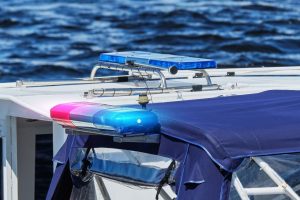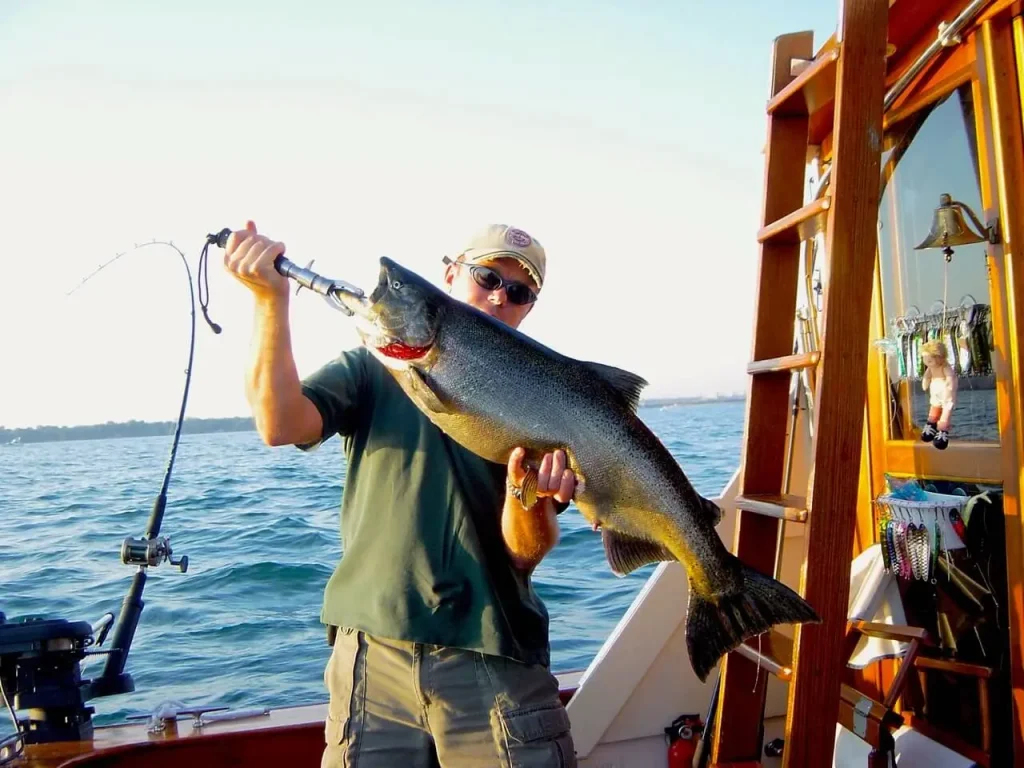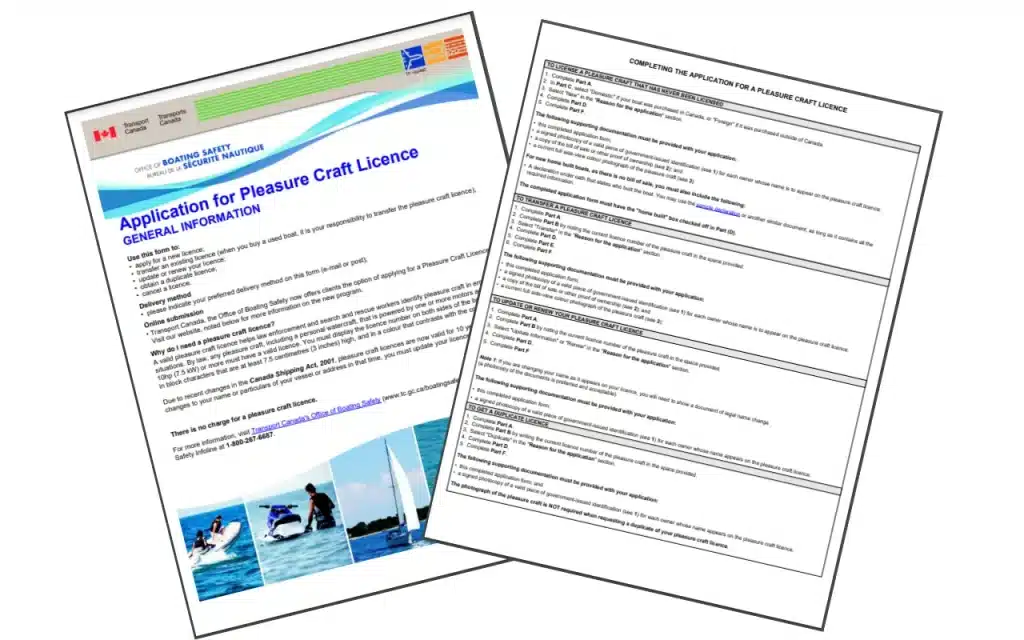Home / Boating Safety Manual / Canada Boating Regulations and Boat Licence Laws
10% OFF WITH CODE:
BLACKFRIDAY10
If you operate a pleasure boat in Canada, you are responsible for obeying Canadian boating laws and regulations.
The Royal Canadian Mounted Police (RCMP), provincial and municipal police forces and other local authorities will enforce these laws across Canada, although there may be exceptions if you are boating in the Northwest Territories or Nunavut.
Even if you are operating a small vessel or sailboat, you are not an adult, or you are a visitor or boating in a private location, Canada boating regulations still apply.
Remember, these rules are here to keep you safe and happy on the water!
Key takeaways
- You are legally responsible for having all required safety equipment on board, regardless of whether the boat is yours, rented, or borrowed. Equipment must be in good working order and easy to access in an emergency.
- Anyone operating a power-driven boat must carry their Pleasure Craft Operator Card (PCOC) or other approved proof of competency at all times.
- Operating a boat while impaired by drugs or alcohol is a serious criminal offense, subject to heavy fines, jail time, and a revoked license. The legal limit is 0.08% BAC.
- Operators under 12 must stick to engines of 10 hp or less (unless supervised); operators between 12 and 16 must stick to engines of 40 hp or less (unless supervised); no one under the age of 16 is allowed to operate a Personal Watercraft (PWC).
- Vessels under 12 meters with motors of 10 hp (7.5 kW) or more must have a free Pleasure Craft Licence. This unique number must be displayed on the boat and is used by SAR in emergencies.
Table of contents
- Safety Equipment Regulations
- Age and horsepower restrictions
- Documentation and boat licences
- Proof of Competency
- Pleasure Craft Licence
- Criminal Code
- Boating under the influence (BUI)
- Frequently Asked Questions
Safety Equipment Regulations
When operating a pleasure craft in Canada, you are responsible for keeping all necessary safety equipment on board at all times. This applies even if the boat is rented, chartered or borrowed.
Pleasure craft include:
- Power boats
- Sail boats
- Personal watercraft
- Airboats
- Air cushion vehicles (hovercraft)
- Kiteboards
- Wing in ground effect vessels that are used only for recreation.
Operating certain powered devices like motorized surfboards or eFoils may be restricted if they do not meet Transport Canada’s vessel compliance requirements. Remote-controlled model boats are allowed, but they must be operated safely and in accordance with local rules.
Safety equipment standards
Your boating safety equipment must be:
- In good working order.
- Easy to access in case of an emergency.
- Maintained and/or replaced according to the manufacturer’s instructions (including PFDs and life jackets).
Boating safety equipment basics
The bare minimum safety equipment requirements for any vessel are:
- You must have one properly fitted, approved lifejacket or PFD on board for every person. While it is strongly recommended to wear a PFD at all times, Canadian law requires only that they be accessible, in good condition, and the right size for each person. Remember to test each PFD first, and make sure it fits properly.
- One buoyant heaving line at least 15 m (49’3”) long.
- One bailer or one manual bilge pump or equivalent bilge-pumping arrangements.
Note: The specific type of equipment you need depends on the size of the boat you are operating. Rules may also vary in competition settings.
For a complete list, see our Boating Safety Equipment page.
Age and horsepower restrictions
Canada boating laws stipulate that you must be a certain age to operate a pleasure craft fitted with a motor with a certain amount of horsepower.
- Under 12 years of age, and not directly supervised*: Can operate a vessel with no more than 10 hp (7.5 kW).
- Between 12 years and under 16 years of age, and not directly supervised*: Can operate a vessel with no more than 40 hp (30kW).
- Under 16 years of age: Not allowed to operate a Personal Watercraft (PWC).
- 16 years of age and over: No power restrictions.
*Directly supervised means: accompanied and directly supervised in the boat by a person 16 years of age or older.
Documentation and boat licences
All boaters in Canada must carry proof of competency in the form of a Pleasure Craft Operator Card (sometimes called a boating licence), personal identification and a Pleasure Craft Licence (for 10hp or more) on board with them at all times.
Proof of Competency
According to Canadian law, anyone operating a power-driven boat, even if they are not using the motor, must have a Pleasure Craft Operator Card or other accredited proof of competency which they carry on board at all times.
You can obtain a Pleasure Craft Operator Card (PCOC) by taking an accredited boating safety course and passing an online exam. Training and testing for this card is only available through Transport Canada accredited course providers like Drive A Boat Canada.
Important points:
- Any Canadian operator of a powered vessel, regardless of when they received previous training, must carry the PCOC or other proof of competency.
- An Indigenous person may be exempt from the requirement to carry the PCOC or other proof of competency if they are engaged in daily living or subsistence activities.
- A rental boat safety checklist, issued by the rental agency and carried onboard, serves as proof of competency for the rental period, temporarily exempting the operator from needing a PCOC.
- A non-resident operating a foreign-registered or foreign-licenced vessel is exempt from the PCOC requirement, provided they have a valid proof of competency from their home country, and they are not operating their boat in Canada for more than 44 days.
For further questions about proof of competency, check out our Proof of Competency FAQ page.
Pleasure Craft Licence
All vessels and PWCs less than 12 metres in length with a motor or motors adding up to 7.5 kW (10 hp) or more are required to have a Pleasure Craft Licence. You must also licence dinghies or tenders.
With a Pleasure Craft Licence, your boat is assigned a unique licence number that is free and valid for 10 years. It must be placed on the side of your boat. The Pleasure Craft Licensing System allows Search and Rescue personnel to access information about your boat 24 hours a day, seven days a week, in the event of an emergency.
You can submit a request for a Pleasure Craft Licence from Transport Canada online or by post.
If you have registered your boat, you do not need to licence it. To learn more about registering your boat and the costs associated with it, visit Transport Canada’s Vessel Registration Office online.
Criminal Code
All elements of Canada’s Criminal Code apply when out on the water. Feel free to consult our list of dangerous boating offenses for more detail.
Boating under the influence (BUI)
In Canada, it is illegal to operate a boat if you are impaired by drugs (including cannabis) or alcohol.
If you have a Blood Alcohol Concentration (BAC) over 80mg or .08%., you are deemed above the legal federal limit. If you have 2-5 nanograms (ng) of tetrahydrocannabinol (THC) per ml of blood or 50 mgs of alcohol per 100 ml of blood and 2.5 ng of THC per ml of blood, it is illegal to operate a boat. You can face charges resulting in jail time, heavy fines and a revoked boating licence.
Boat passengers may legally consume alcohol within accepted limits only if the boat:
- Is anchored or secured alongside a dock.
- Has permanent cooking and sleeping facilities.
- Has a permanent toilet.
Get your boating licence with Drive A Boat Canada!
We offer a comprehensive online course leading to lifetime certification. Register with Drive a Boat Canada today, and learn everything you need to know to pass the boating exam. With your boating licence (PCOC), you can take to the water legally anywhere in the country.
Frequently Asked Questions
Yes, you need a Pleasure Craft Operator Card (PCOC) or other proof of competency to operate any pleasure craft fitted with a motor.
Yes, the card must be carried on board the vessel at all times during operation, along with appropriate identification.
Yes. Specific horsepower limits apply to operators under the age of 16. No one under 16 may operate a PWC, regardless of engine size.
No. Non-residents may use a PCOC from their home country or state (or other valid proof of competency) for a short period while visiting Canada.
Required safety equipment varies based on the length of your vessel. Common requirements include life jackets/PFDs for every person, a sound-signalling device (whistle), a bailer or bilge pump, a buoyant heaving line, and potentially a fire extinguisher.
You must have one properly fitted, approved Personal Flotation Device (PFD) or life jacket for every person on board.
For most small boats (6 meters/20 feet or less), the maximum capacity (weight and number of people) is posted on the Canadian Compliance Notice (capacity plate) affixed near the helm or transom.
Yes. Under the Canada Shipping Act, 2001, you have a legal duty to render assistance to any person or vessel.
Sources
- Government of Canada Small Vessel Regulations. Department of Justice. https://laws-lois.justice.gc.ca/eng/regulations/sor-2010-91/
- Government of Canada Canada Shipping Act, 2001 (S.C. 2001, c. 26). Department of Justice. https://laws-lois.justice.gc.ca/eng/acts/C-10.15/section-131.html
- Government of Canada Criminal Code (R.S.C., 1985, c. C-46) Consolidated Acts. https://laws-lois.justice.gc.ca/eng/acts/c-46/section-320.14.html
- Government of Canada Operator Card (PCOC) – FAQ. Transport Canada. https://tc.canada.ca/en/marine-transportation/marine-safety/operator-card-pcoc-faq
- Government of Canada Competency of Operators of Pleasure Craft Regulations SOR/99-53 Consolidated Regulations. https://laws.justice.gc.ca/eng/regulations/SOR-99-53/page-1.html
- Government of Canada Pleasure Craft Operator Card (PCOC). Transport Canada. https://tc.canada.ca/en/marine-transportation/preparing-operate-your-vessel/pleasure-craft-operator-card-pcoc
- Transport Canada. SAFE BOATING GUIDE. [PDF]. https://tc.canada.ca/sites/default/files/2024-03/tp_511e.pdf
Last articles




